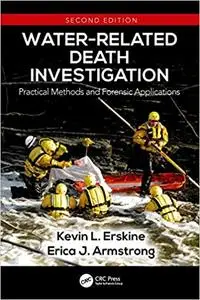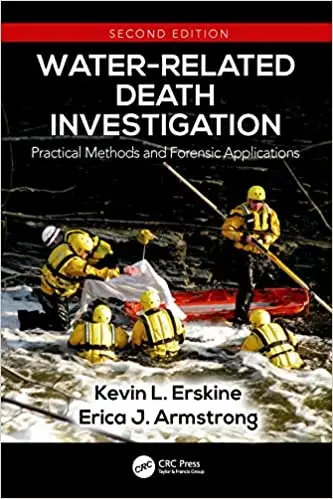Water-Related Death Investigation: Practical Methods and Forensic Applications, 2nd edition by Kevin L. Erskine and Erica J. Armstrong
English | May 19, 2021 | ISBN: 036725154X | 438 pages | PDF | 166 MB
English | May 19, 2021 | ISBN: 036725154X | 438 pages | PDF | 166 MB
Nearly ten years after the first edition of Water-Related Death Investigation: Practical Methods and Forensic Applications, water death cases continue to be improperly investigated. The pathologist’s report can determine the cause of death as a drowning, but the manner of death is the most challenging to prove. The report will not determine if a victim jumped into the water to commit suicide, fell into the water accidentally, or was pushed in as a homicidal act. Many drowning cases do not reflect injury to the body, so evidence collected at the scene plays a vital role.
The importance of an on-scene body assessment cannot be overemphasized. Often, the body evidence begins to change rapidly upon recovery and may not be present during an autopsy. Written statements on the scene are an effective tool to use to determine the accuracy of information given to arriving officers. These statements need to be written by the witnesses themselves as well as the reporting person. The "Show Me" technique can also help reveal discrepancies in a person’s version of what occurred as well as aid in providing the most details to an incident as is humanly possible.
This second edition includes updated information on the latest technology to assist water death investigators. Parabon Snapshot can help determine the faceless identity of skeletal remains and help locate potential suspects using the science of DNA. Drones can aid in locating missing persons as well as human remains, even months after death. Updated information is provided regarding fingerprints from submerged objects, and Carbon-14 can help determine the origin of a found corpse.
Key Features:
Thoroughly reviews the physiological aspects of drowning
Reveals the investigative characteristics inherent to various scenes of water-related deaths
Highlights certain "red flag" indicators that may point to foul play or scene staging
Outlines autopsy protocols, trial preparation, and expert witness testimony
Provides numerous case studies and numerous illustrations to further clarify key points presented in the text
Coauthored by a Master Water Death Investigator and an experienced forensic pathologist, Water-Related Death Investigation: Practical Methods and Forensic Applications, Second Edition merges the essentials of evidence collection and field investigation with autopsy best practices and laboratory testing. It will continue to serve as a valuable resource for the various professionals involved in these cases.



